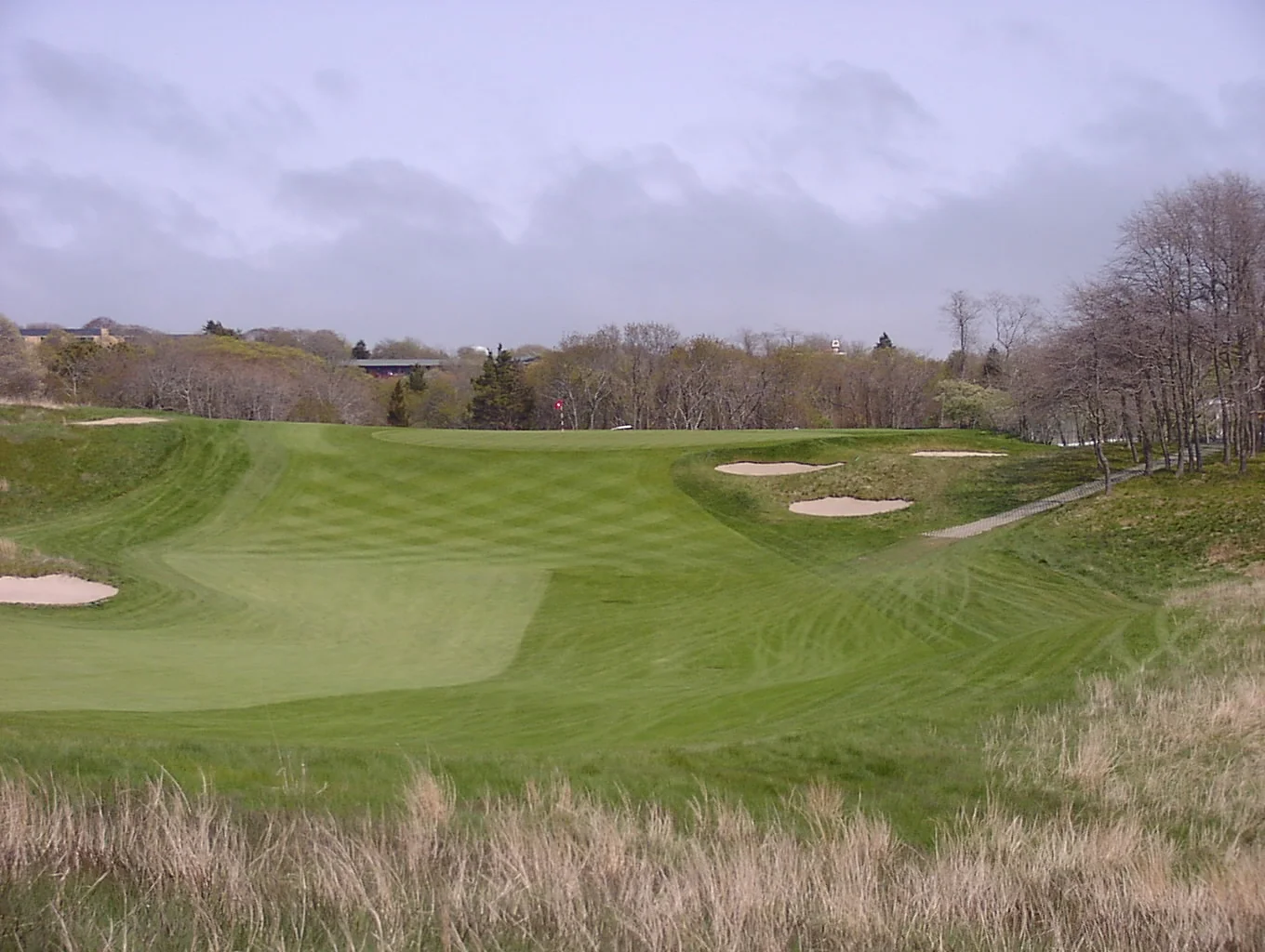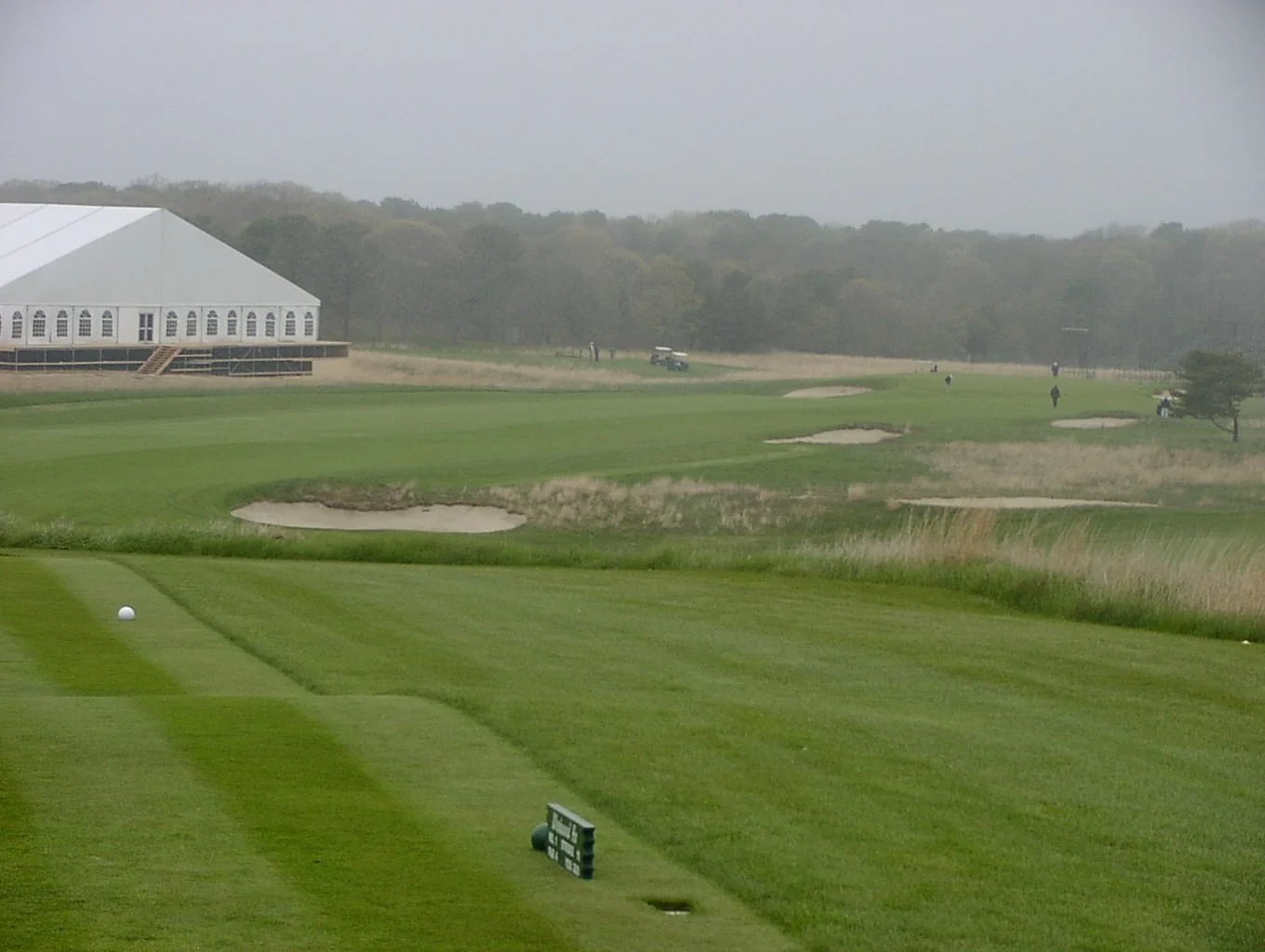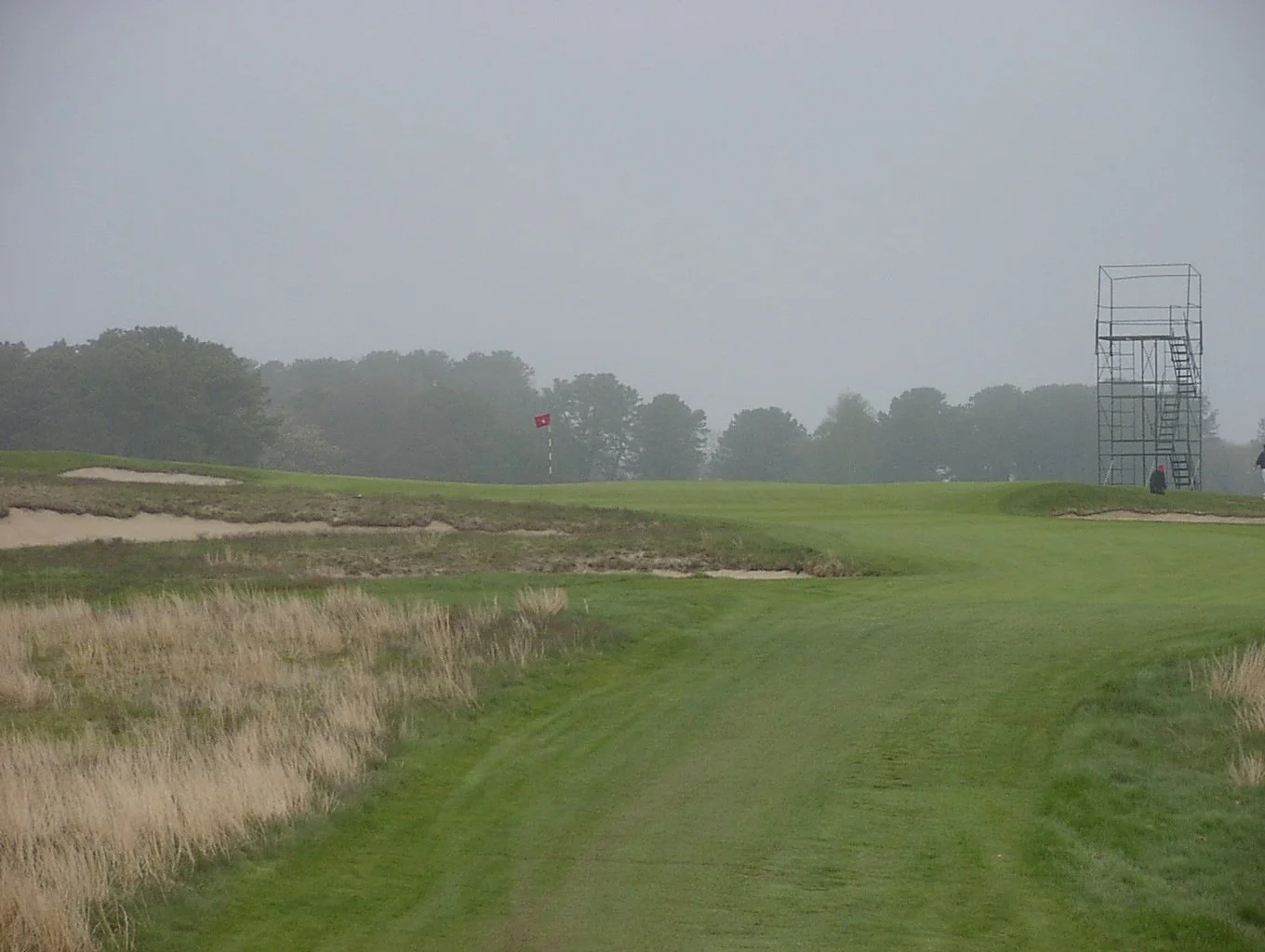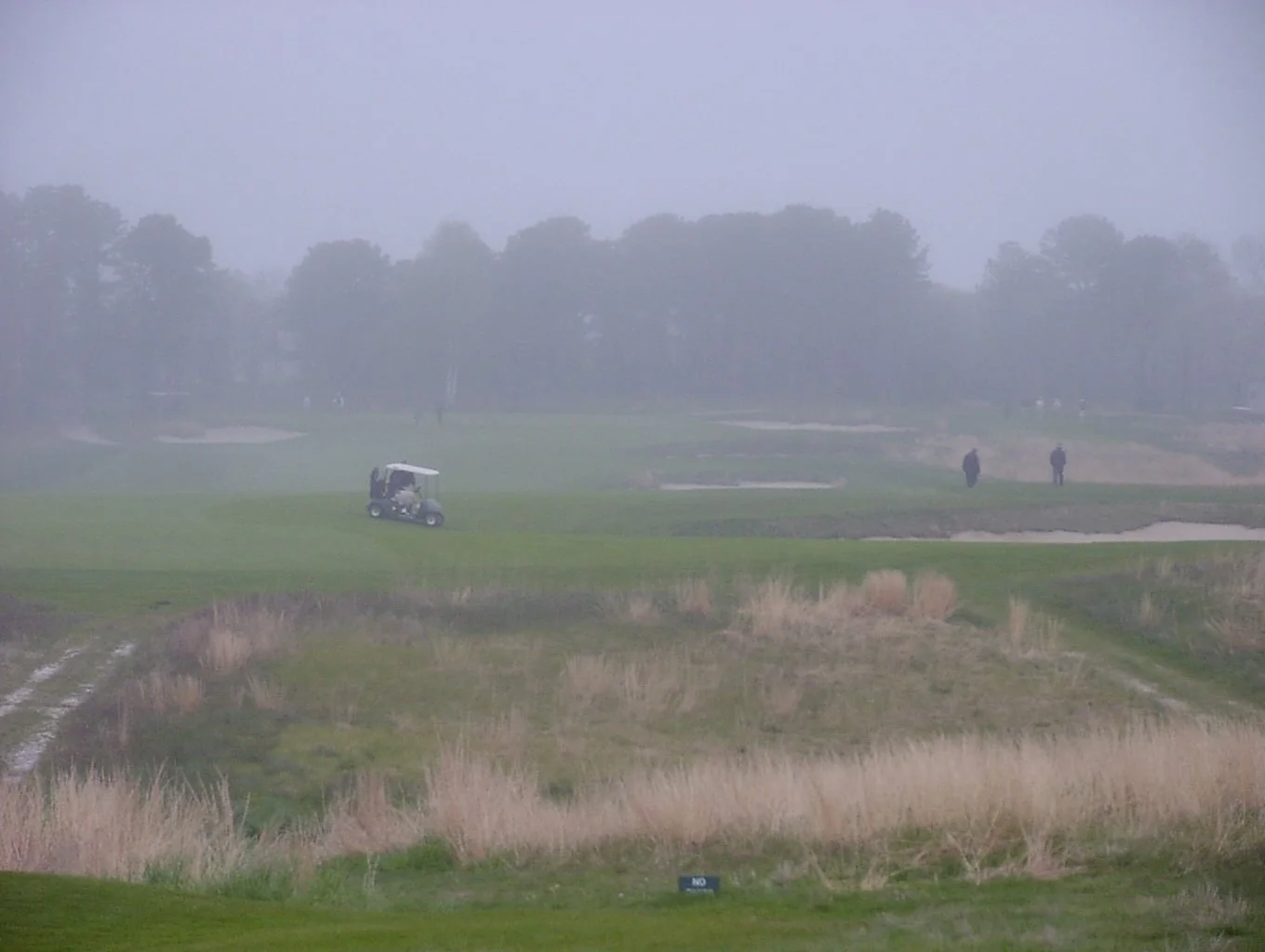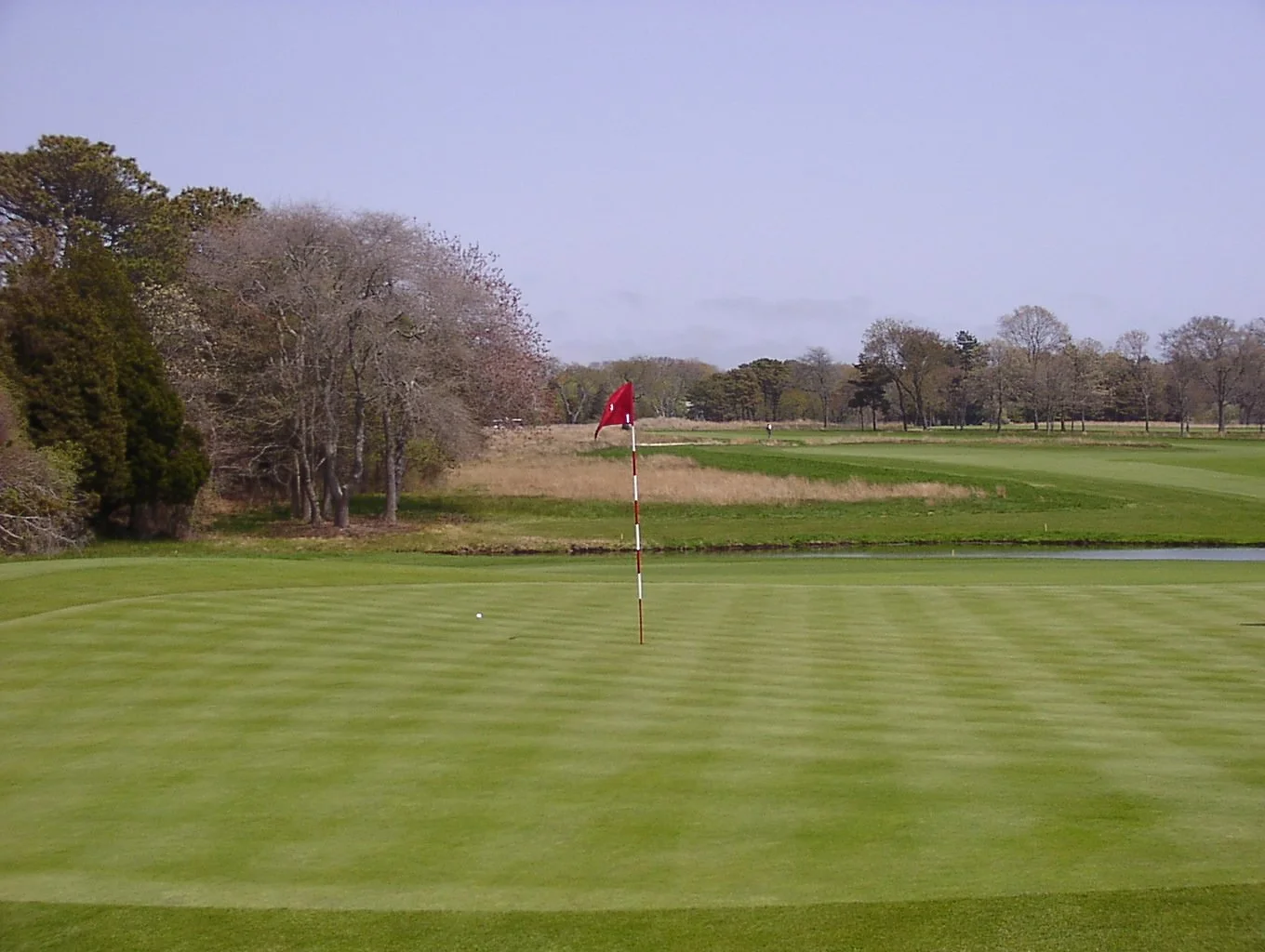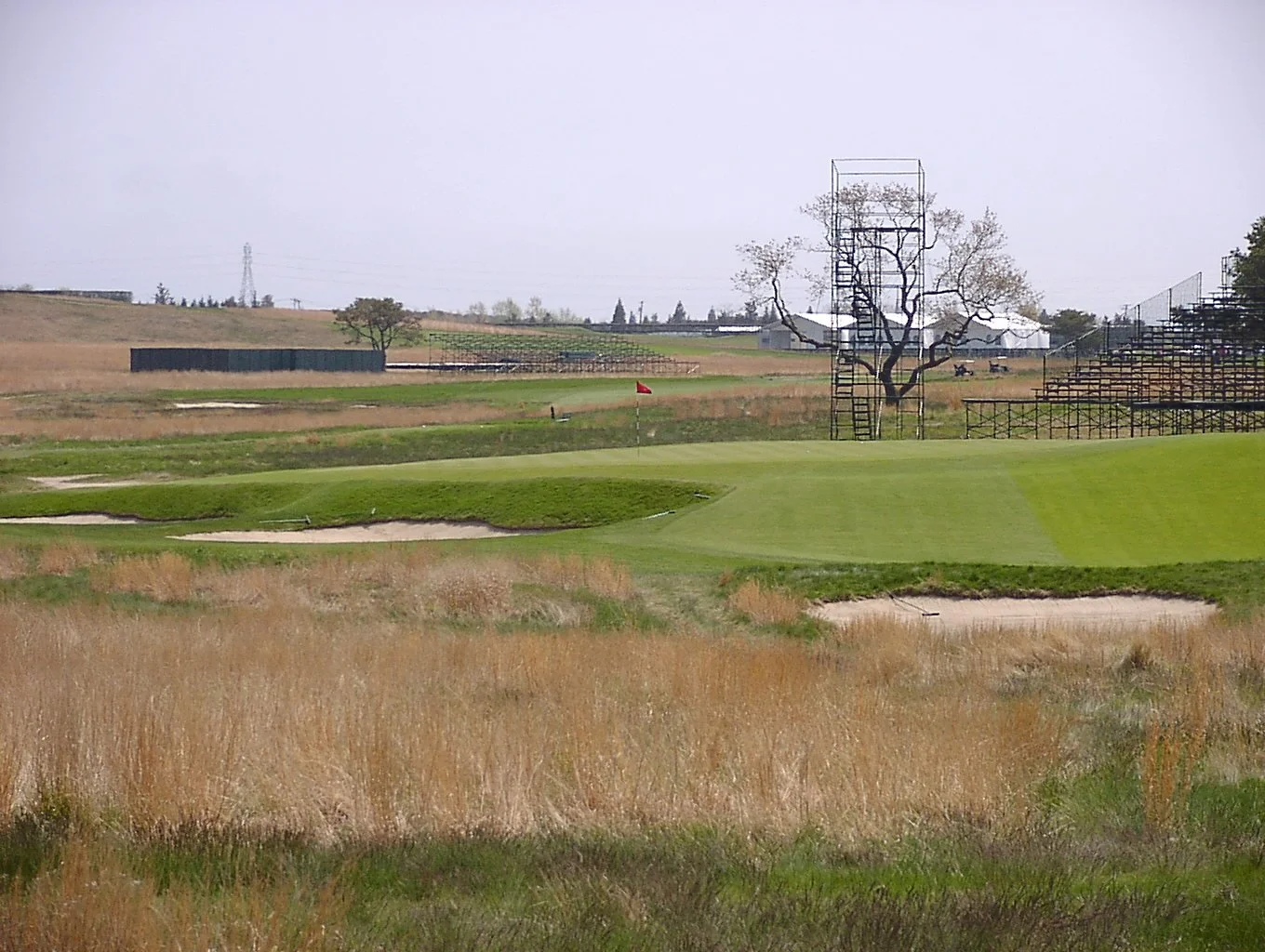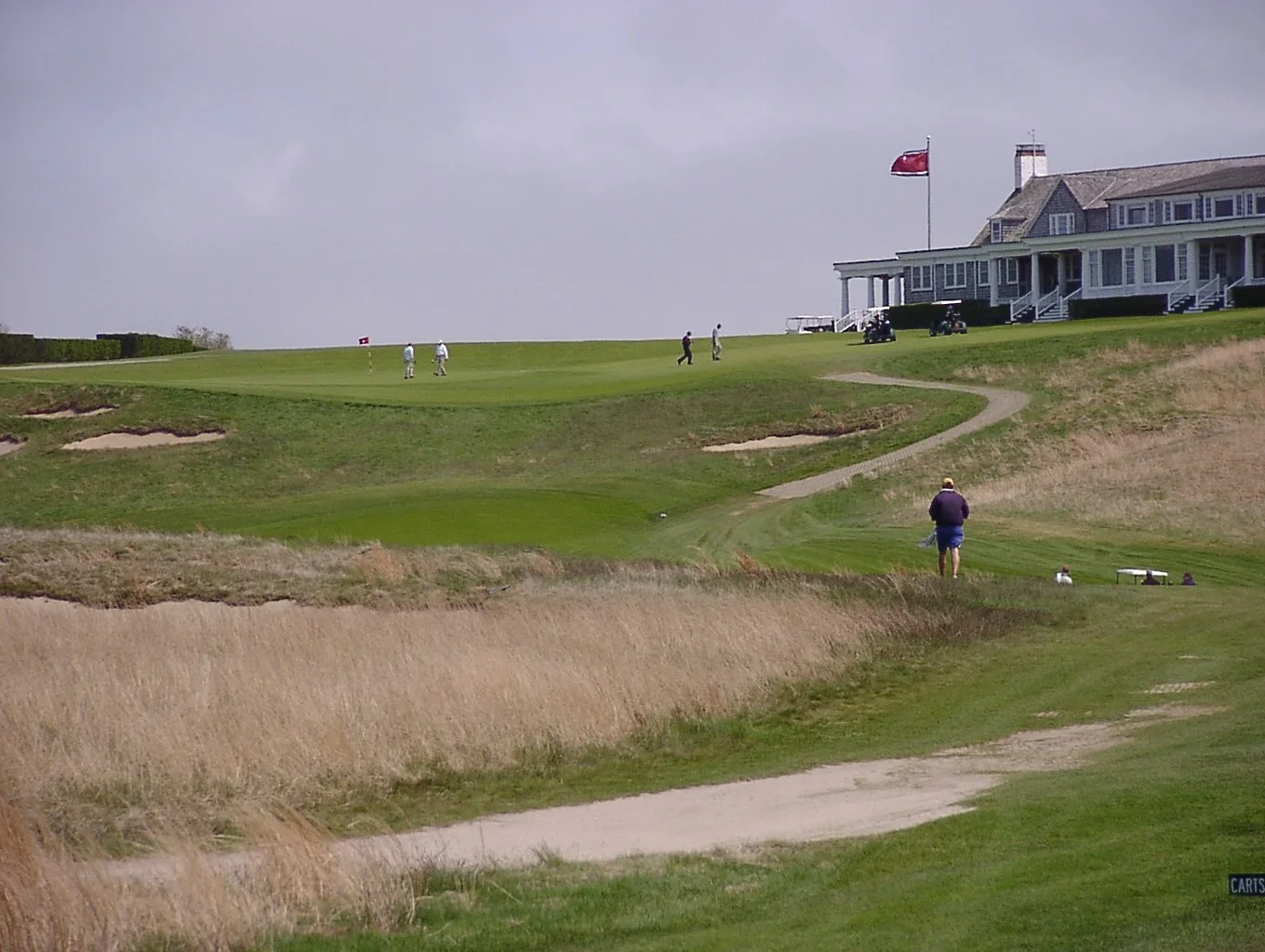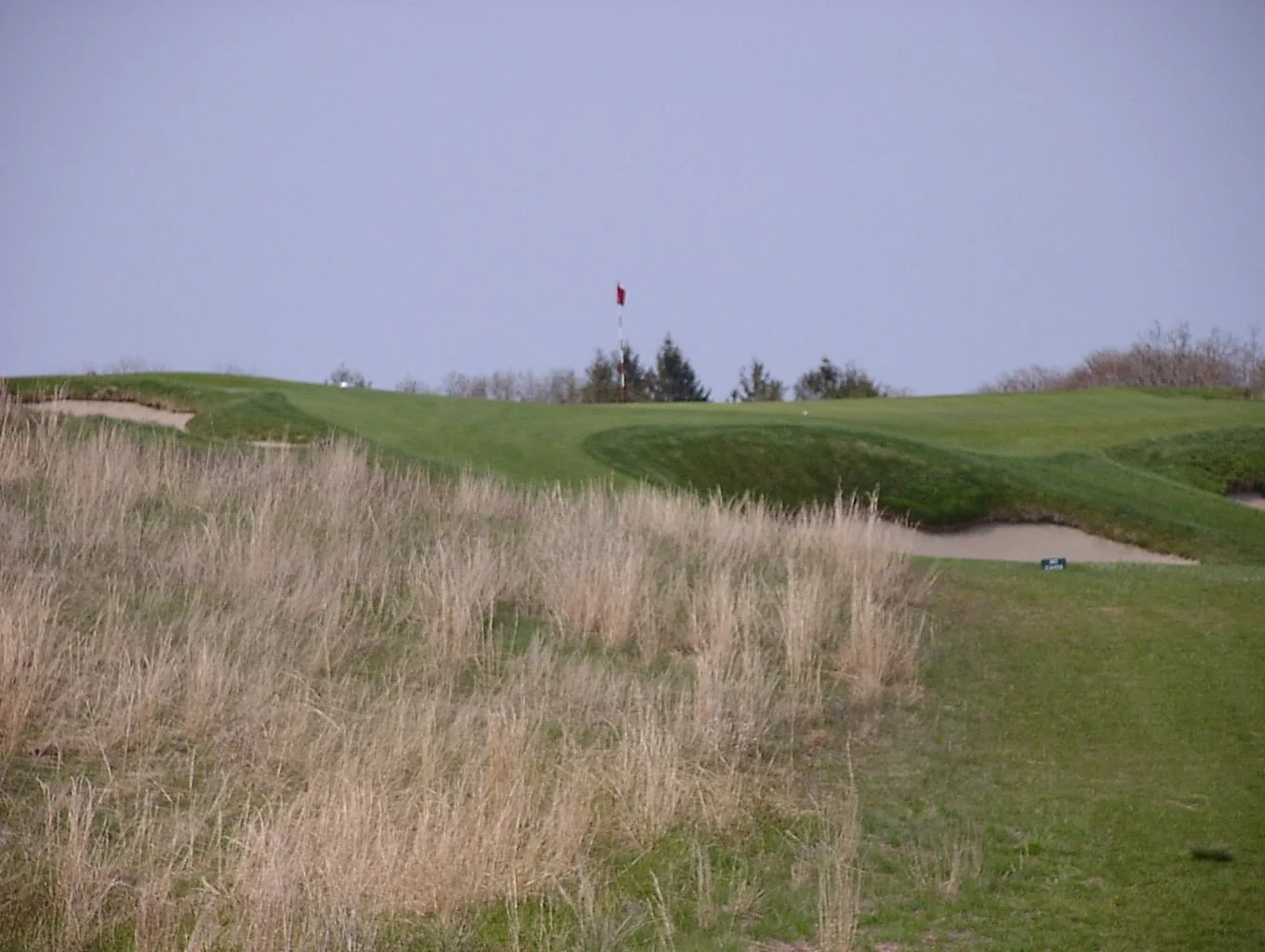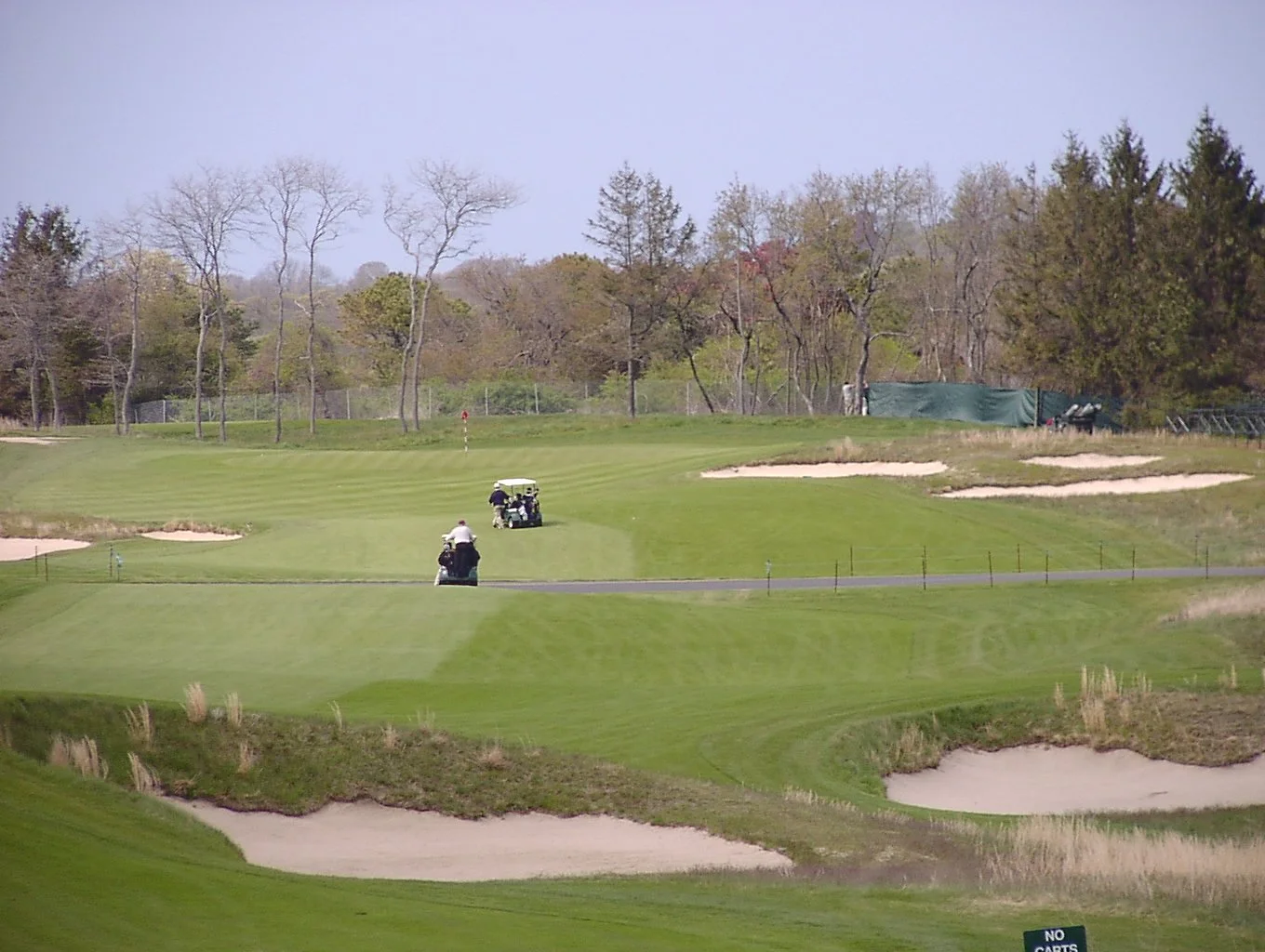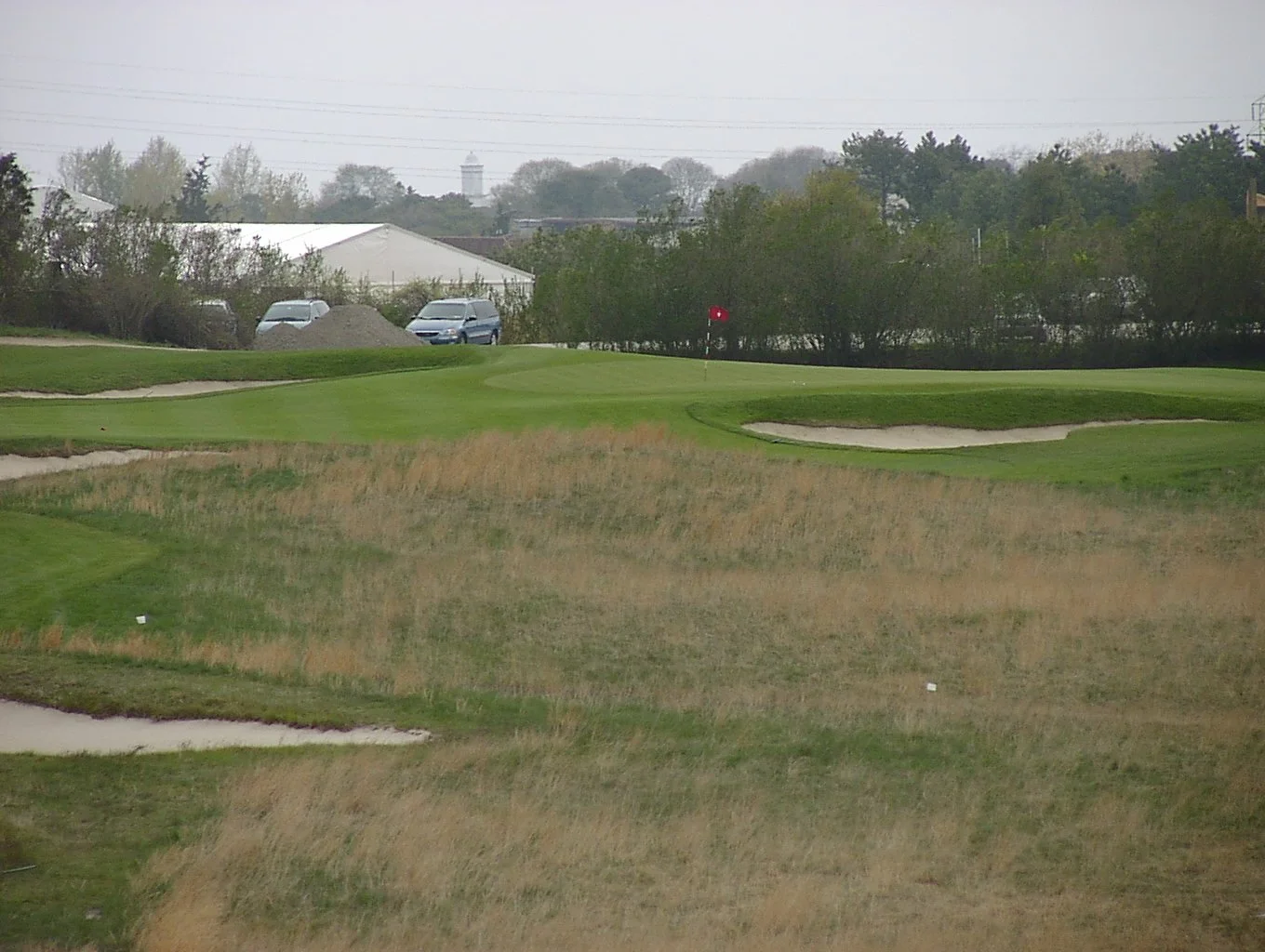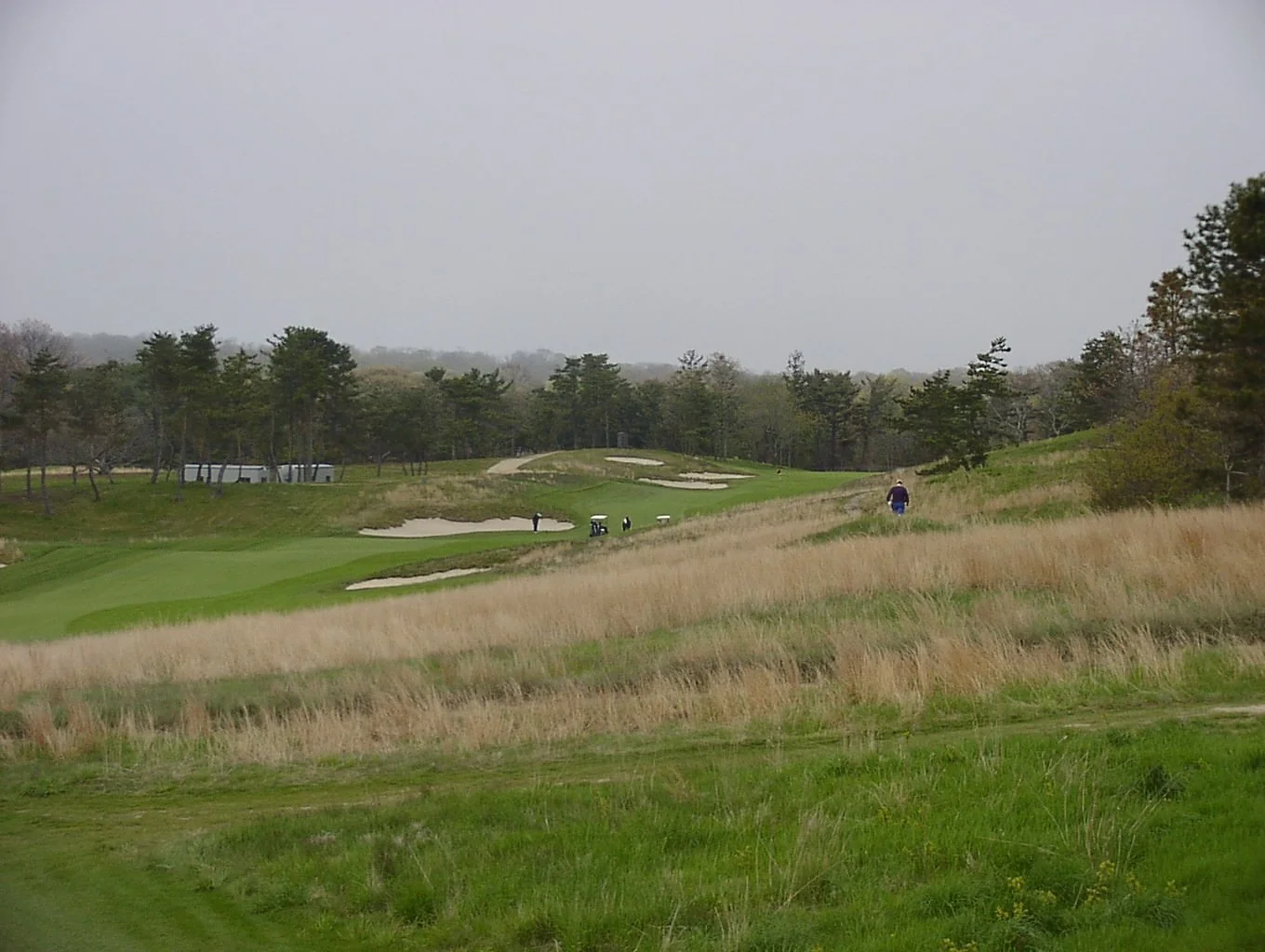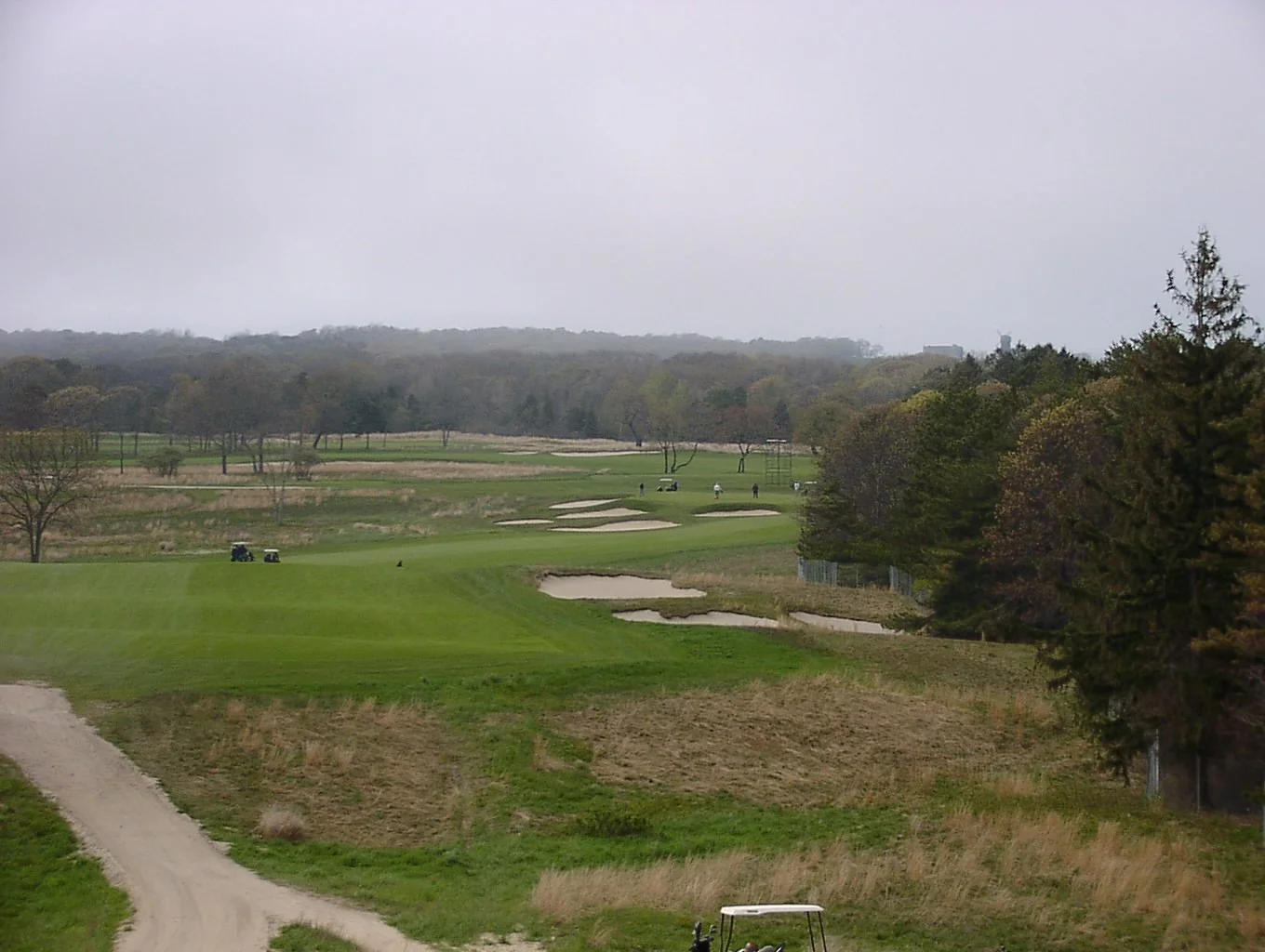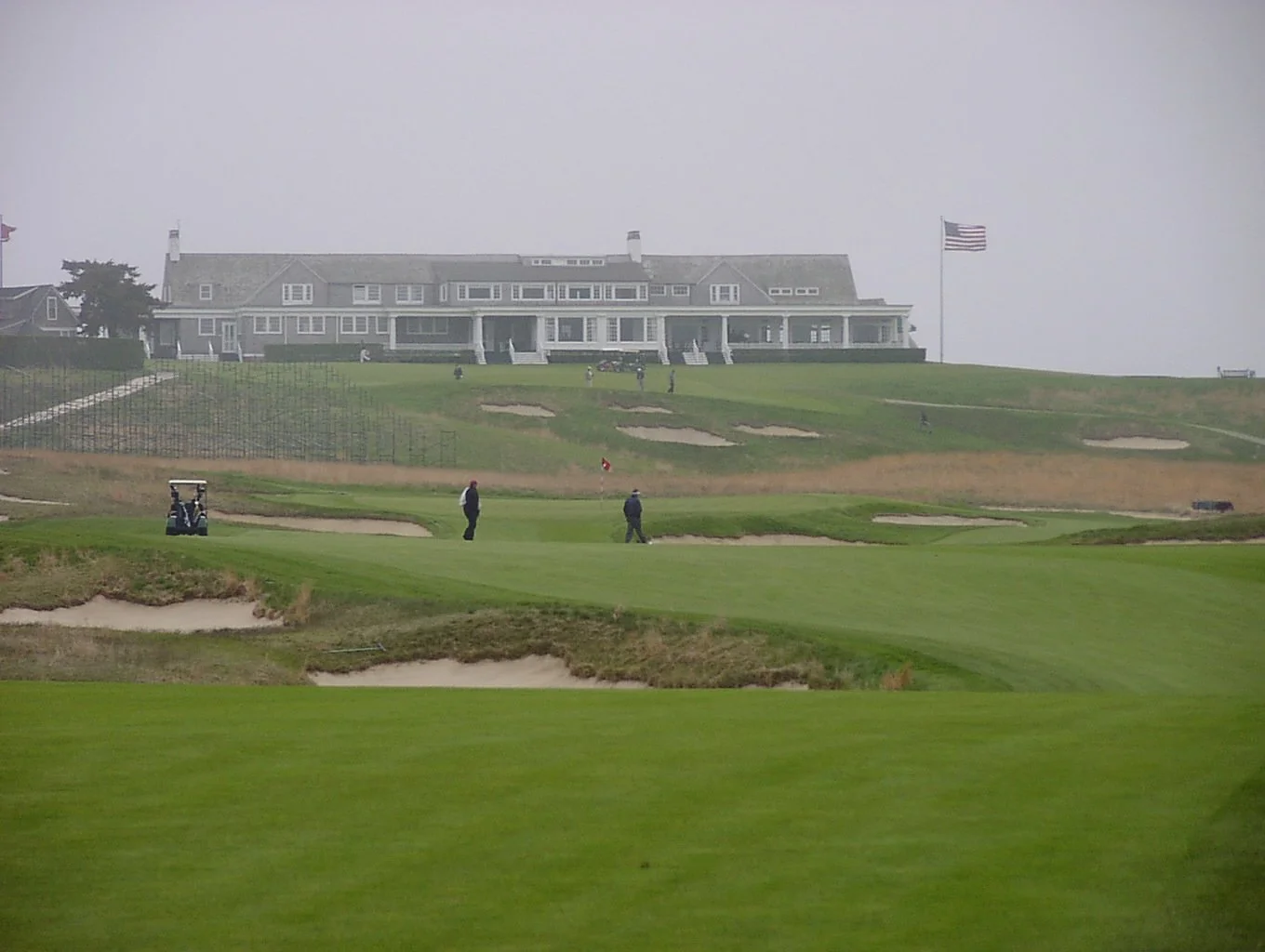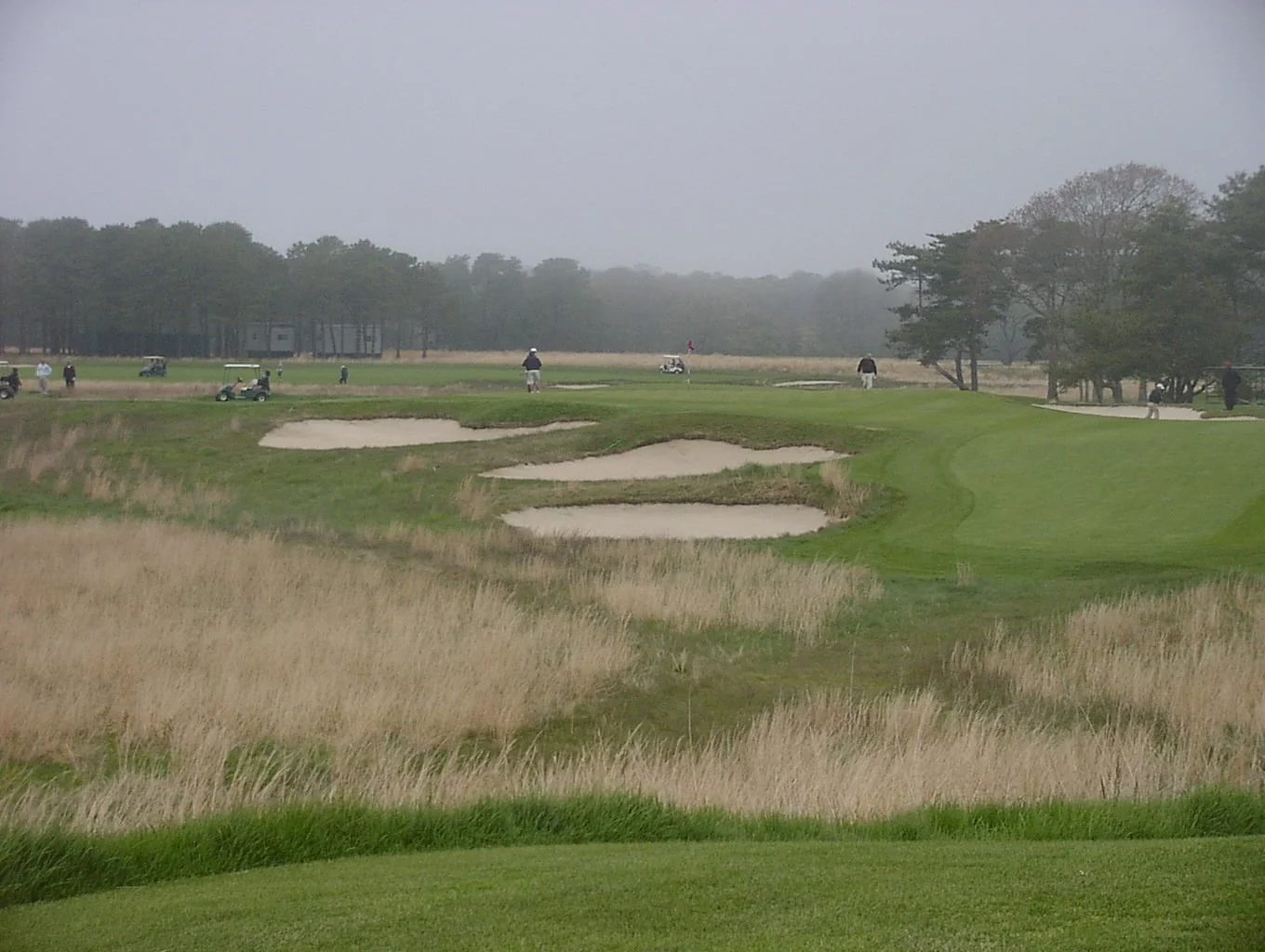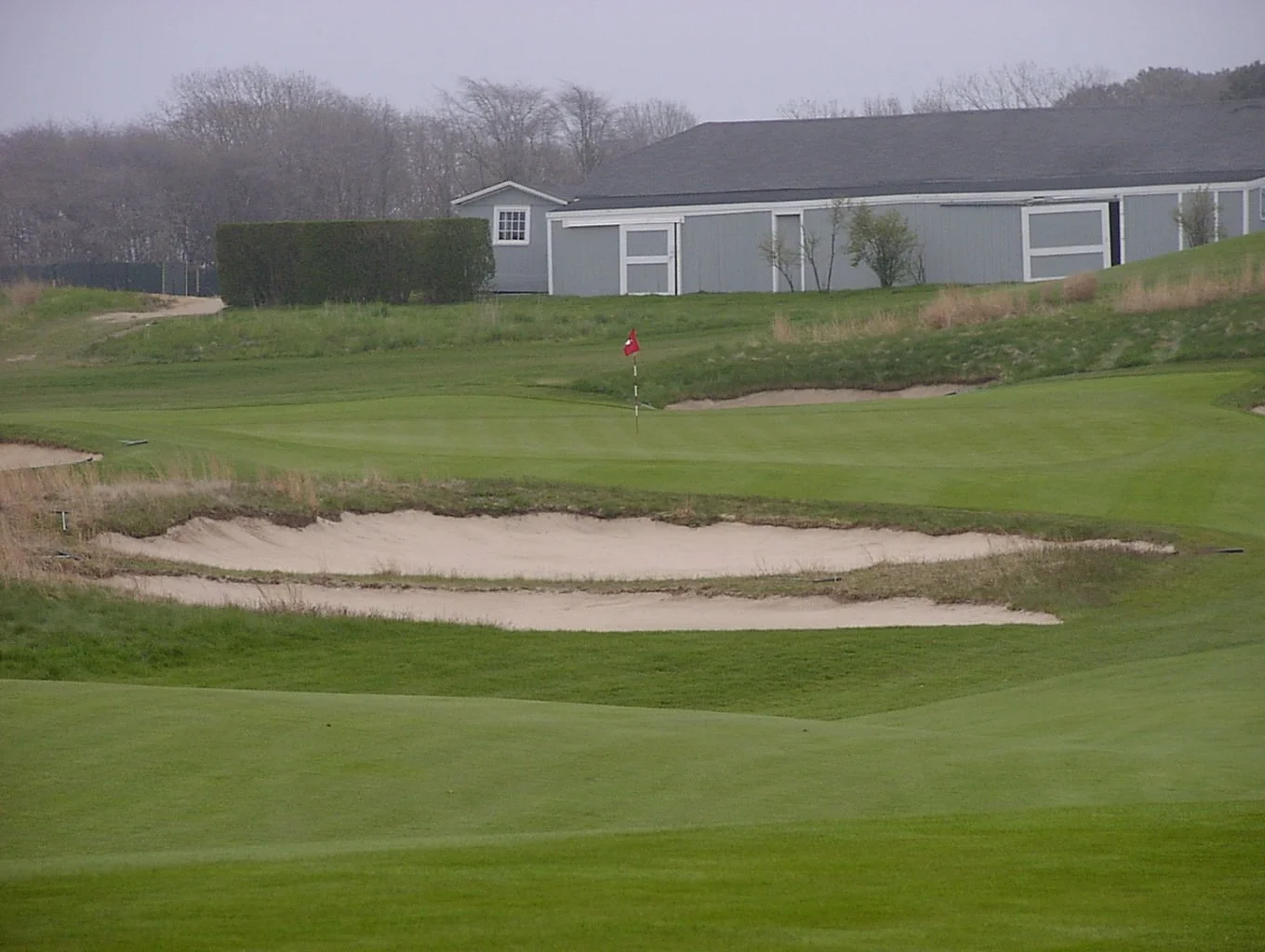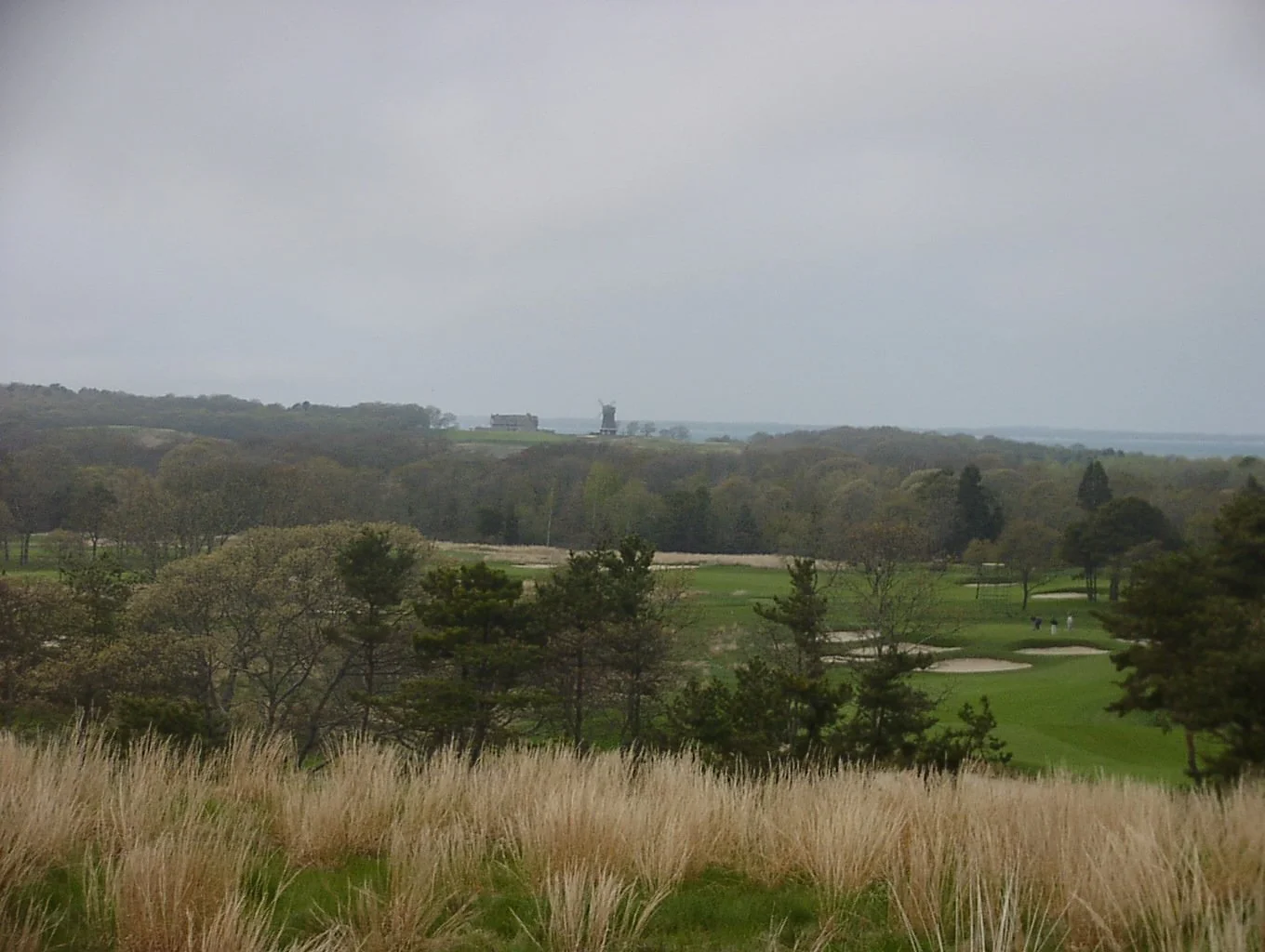SHINNECOCK HILLS GOLF CLUB
Course Architects: Willie Davis (1891), Willie Dunn (1894), C. Blair MacDonald
and Seth Raynor (1916-17), William S. Flynn (1929-31).
Year Opened: 1891
Location: Southampton, New York
Slope: 145. Rating: 74.7
Par: 70
Yardage: 7,445
Hole-by-Hole: 1 - Par 4 399 Yds 10 - Par 4 415 Yds
2 - Par 3 252 Yds 11 - Par 3 159 Yds
3 - Par 4 500 Yds 12 - Par 4 469 Yds
4 - Par 4 475 Yds 13 - Par 4 374 Yds
5 - Par 5 589 Yds 14 - Par 4 519 Yds
6 - Par 4 491 Yds 15 - Par 4 409 Yds
7 - Par 3 189 Yds 16 - Par 5 616 Yds
8 - Par 4 439 Yds 17 - Par 3 180 Yds
9 - Par 4 485 Yds 18 - Par 4 485 Yds
Par 35 3,819 Yds Par 35 3,625 Yds
Awards Won: Ranked 4th by Golf Digest - America's 100 Greatest Courses (2025-26),
Ranked 1st by Golf Digest - Best course in New York (1991-2025).
Events Held: U.S. Open (1896, 1986, 1995, 2004, 2018, 2026, 2036),
U.S. Amateur (1896), U.S. Women’s Open (2036)
U.S. Women's Amateur (1900),
U.S. Senior Amateur (1967),
Walker Cup (1977).
Website: shinnecockhillsgolf.cub.org
HISTORY: Just look at the events held at this course and you will know what kind of history is involved. Let's start with the second U.S. Open of all-time back in 1896, when James Foulis shot a tournament-best 74 in the second round for a three-shot win over defending champion Horace Rawlins. The event was held amidst much controversy, as most of the other 33 players in the field
resented the participation of local African American John Shippen and Oscar Bunn, a local Native American. The brouhaha died and the event was held.
The 86th U.S. Open was staged at Shinnecock Hills and Ray Floyd was the victor with a score of one-under-par, two clear of Lanny Wadkins and Chip Beck. Floyd, who trailed Greg Norman by three shots heading into the final day, shot 66 to become the only player in history to win at Shinnecock with an under-par score. Floyd birdied holes 11, 13 and 16 and held the lead outright for the first time after making par on 14. Norman would shoot 75 the final day and tie for 12th, six shots back. Joey Sindelar had a roller coaster event that week, opening with 81 then shooting 66 in round two. He eventually tied for 15th. Floyd by the way, a member of the course, shot a course-record 64 back in 1998 when playing with other members.
The U.S. Open returned to Shinnecock in 1995 and again Norman was the third-round leader. This time around, Corey Pavin snatched victory from the "Shark" with a final round 68 to Norman's 73 for a two-shot win over the Australian. Pavin's historic 228-yard four-wood on the final hole sealed the win, as he two-putted from five-feet for par and the win.
When the 1977 Walker Cup was staged at Shinnecock, former USGA president Fred Ridley was a member of the squad which defeated Great Britain and Ireland, 16-8. Also on that victorious team were Gary Hallberg, Scott Simpson and Jay Sigel, who defeated a squad that included former Masters champion Sandy Lyle and Peter McEvoy.
Shinnecock Hills Golf Club opened in 1891 with just 12 holes. Along with The Country Club (MA), Newport Country Club (RI), Chicago Golf Club (IL) and Saint Andrew's Golf Club (NY), the five courses formed the United States Golf Association in 1885. One of the five founding member clubs of the USGA, Shinnecock Hills Golf Club is the oldest incorporated golf club in the United States, having been founded in 1891.
Shinnecock was America's first course to have a clubhouse and the first 18-hole golf course on the East Coast, as it was expanded in 1895. The clubhouse was designed by famed architect Stanford White, who crafted the original Madison Square Garden. White, who finished the clubhouse in 1892, was gunned down in 1906 by railroad and mining heir Harry Thaw, after having an affair with a 16-year-old chorus girl, who later became his wife. White was killed during a musical at Madison Square Garden.
Shinnecock Indians, who once occupied much of the land on eastern Long Island, worked as
laborers on the course. Because of new railroad lines and roads, most of the course was re-routed on land to the north in 1927 and completed in 1931 by William Flynn.
The new layout opened in July of '31, as Flynn incorporated the now par-3 7th and parts of the par-3 2nd. The Shinnecock Indians continued to play a prominent role in the maintenance and construction of the course and in 1956, Elmer Smith, a Shinnecock took over as superintendent. Smith passed away in 1980 and was succeeded by his son Peter. An Ivy League graduate from
Dartmouth, Peter Smith was instrumental in setting up the course for the 1986 and 1995 U.S. Opens. Smith was forced out late in 1999 and was replaced by former Pebble Beach "super" Mark Michaud.
Although roughly 600 members of the Shinnecock tribe live on a reservation just a mile away, only a smattering work at the club.
When the U.S. Open returned to Shinnecock Hills in 2004, Retief Goosen came away the winner, as he edged Phil Mickelson by two shots. Goosen was the only player in the field to post three of the four rounds at par or better. In addition, Goosen played the two par-5s in six-under par. Goosen at four-under-par and Mickelson at two-under were the only players to break par for the week.
Fourteen years later, the U.S. Open returned for the 118th championship. Four players shared the lead at one-under-par, Russell Henley, Dustin Johnson, Scott Piercy and Ian Poulter following the opening round. Johnson moved four clear after the second round, as he carded a three-under 67 and stood at four-under-par. Piercy and Charley Hoffman were tied for second. Johnson struggled in round three with a 77 and fell into a tie for first with Daniel Berger, Tony Finau and Brooks Koepka at three-over-par. Koepka, the defending champion that year, carded a Sunday round of 68 to clip Tommy Fleetwood by one shot to become the first to successfully defend since Curtis Strange in 1989. Fleetwood became the sixth person in U.S. Open history to shoot 63.
The USGA has rewarded Shinnecock Hills with three more championships in the future, the 2026 and 2036 U.S. Opens and the 2036 U.S. Women’s Open. “Few clubs places can match the historic importance of Shinnecock Hills to golf in the United States,” said John Bodenhamer, USGA chief championships officer. “"As an organization, we felt that such an iconic venue would be an ideal stage for both our men’s and women’s premier championships. It will offer the perfect opportunity to bring the game’s best to one course and provide fans the chance to watch them compete for a national championship in back-to-back weeks.”
REVIEW: How about walking out of the clubhouse right onto the first tee. A perfect setting, as the opening hole traverses downhill, bends to the right and is just 393 yards, the second shortest par four on the course. Driver is not needed here as placement is key, as the fairway is extremely narrow. A short iron is left to a sloping green guarded left and right by sand. If you can hit the green, you will leave yourself with a certain birdie chance of no longer than 15-20 feet.
The longest par three on the course, the second hole can be stretched to 240 yards if the pin is placed in the back. Playing uphill, a long iron will be needed to hit this well-bunkered green. The
putting surface slopes from the center to the front and from the middle to the back. Missing this green will most likely result in bogey.
The third is a straightaway, lock-and-load type hole. The length of the hole has been increased 25 yards since the 1995 U.S. Open to 478 yards. The par four borders the National Golf Links of America on the left. Your tee shot must carry 200 yards just to reach the fairway, as a series of bunkers and native grasses protect the entrance to the short grass. The landing area is extremely narrow, with an ideal tee shot reaching the bottom of the final hill. Easier said, than done. A short iron will be left if you kept it in the fairway. The green is the simplest on the course, flat and circular in depth. Make par and move on.
The fourth hole has been lengthened some 30 yards to 435 from the tips. Doesn't seem like much, but the hole usually plays into a stern wind, so you will still need to hit driver. The hole bends to the right, with a pair of large bunkers guarding the landing area. Bailing out left will leave a longer
approach to a very undulating putting surface that slopes seemingly every which way. The green is elevated, which may make an up-and-down extremely difficult.
A definite birdie chance, the par five fifth is certainly reachable in two. Just 537 yards in length and despite the addition of a new tee, the player must capitalize on the first of only two par fives on the course. A myriad of sand protects the landing area, left, front and right, but most will not come into play, as the hole usually plays downwind. The green is hard to hold and protected by a pair of bunkers in the front. Closely mown areas front and back will give players fits, but will not be difficult for the best golfers in the world.
Another long par four, the sixth proves to be most challenging due to the landing area which cannot be seen from the tee. Use your caddie wisely, as he will give you a target to shoot for. Three metal
will probably be the play here, as the longer you hit your drive, the less room is left to hit. Through the fairway results in sand (four bunkers) and right is deep and thick grass. Now you're left with 200 yards over a water hazard which will only come into play if you're laying up. The green slopes back to front, but miss long and it falls off to the back and right. A very long and deep bunker protects the left section of the putting surface, a must to avoid.
One of the true remaining holes from the C.B. MacDonald days, the seventh is a spectacular test. Not overly long, the par three is generally played into a stiff wind, making club selection next to impossible. The green slopes right to left and is protected by two deep bunkers on the left. Bail out right and you'll find more sand or worse, deep rough. Short, and you'll roll off the green, long and you'll get more of the same. Bogey's not so bad.
Although a short hole, the eighth has been lengthened 30-plus yards to 398 and plays directly into the wind. Sand and deep rough protects the left and more sand guards the right on this hole that twists to the right. The landing area is blind from the tee, but driver is still needed despite the narrow fairway. A short to mid-iron awaits to an elevated green. Three deep bunkers protect a green that slopes from back to front. Missing this large green long is no bargain either, as the closely mown chipping area falls away from the surface. Birdies can be made on a benign day, but par is the norm.
The closing hole on the front side, could very well be the finishing hole at any venue in the world. Some people actually mistake number nine as the 18th. Only 443 yards from the tips, the hole plays much longer than the yardage indicates due to the highly elevated green that sits adjacent to the clubhouse. A 204-yard carry from the tips is needed just to reach the fairway. From there, a long
iron or fairway metal will be required to reach the deck of this green that slopes severely from back to front. As you reach the putting surface and catch your breath, take a look around at the amazing beauty of Shinnecock and the surrounding Great Peconic Bay. Now that you're back to reality, you're probably faced with a slick downhill putt to a front pin placement...good luck. Don't be embarrassed if you happen to three-putt...or worse, it could happen.
The inward nine starts out with an outstanding par four of just 412 yards. Don't be fooled. There is a huge drop-off in the fairway, some 250 yards from the tee. The players must make a decision whether to go for the gusto or layup to the top of the crest. Going for broke will leave an awkward pitch of 120 yards straight up the hill to a very narrow green. Laying back is the sensible play, as you will be able to see the putting surface from 160 yards out. The green is quite difficult, as an approach shot that lands short of the flag will most likely spin back off the green while a long second will roll down off the back of the surface. Play for the center of the green, two-putt and move on.
The par three 11th has been called the shortest par five in the country. Just 158 yards from the tips, the hole plays uphill to a small elevated green that will create havoc for the first-time player or the
experienced member. Wind is always a problem, making club selection next to impossible. Miss short -- deep sand bunker. Miss right -- two deep sand pits. Miss left -- you guessed it, more sand. So long and left seems to be the play...wrong. The greens falls away from the hole and will leave an extremely awkward pitch to a surface that slopes from left to right. Birdie...no, par...maybe, bogey or worse...most definitely.
You most certainly will be able to get some frustrations out on the 12th. The longest par four on the back nine, the 12th plays downhill and usually downwind, so lock and load. After a successful tee shot, a short iron will be left to a large and somewhat flat putting surface, although short will roll back off the green. No sand protects the green, so getting up and down should not be a problem and making birdie could be a possibility.
One of the more scenic spots on the course is the teeing area of the par four 13th. Look to your right and you'll see the beauty of Shinnecock and the surrounding area. The shortest two-shotter on the
course, the 13th plays from an elevated tee to a narrow fairway that bends slightly to the right. Usually into the wind, the second shot will be played uphill to an elevated green that is crowned. Most approach shots will roll off the surface, especially when pin placement is back right. Thinking this is an automatic birdie hole will probably leave you with bogey.
Long and lean. That certainly fits the 14th hole to a tee. Your opening shot is played from an
elevated tee and must be placed quite precisely to a narrow landing area. Miss the fairway right and you have no chance of getting home due to rough and severe slope. A bunker 300 yards off the tee looms large, but is a perfect target to shoot at. The approach shot will play uphill to a green that's
protected by four bunkers short left and right. The putting surface slopes from front to back with the easiest pin position back-center, leaving a definite birdie opportunity.
Cut off as much as you dare on the par four 15th. This downhill dogleg to the right puts a premium on the tee ball. With an accurate shot, the player will be left with just a short iron. However, miss
right and you'll have virtually no chance of reaching the green, even if you are just 100 yards away. The putting surface is protected in front by six bunkers, but is fairly simple, so birdie can be made. Missing long will leave an easy pitch back to the green.
"S" for Shinnecock -- the 16th is not your typical par five. Most players will think birdie, however this hole plays directly into the wind and is virtually unreachable in two. In fact, due to the prevailing breeze, each shot will be a chore to pull off. Sand protects each corner of the S-shaped hole, in fact there are 20 bunkers that occupy the hole, 10 of which surround the green. The putting surface is very narrow and slopes from back to front. Down the stretch, this is no hole to fool with,
just make par and move on.
The last realistic chance for birdie will come at the par three 17th. Although the surface is well guarded by four large bunkers, the green is fairly flat and should pose little problems as far as slope. In 1995, this hole played seven yards longer with a tee box slightly to the left of its present location. Norman's chance for the title ended here with bogey. The best play here would be a shot from right to left setting up your best chance for a deuce.
You will be hard pressed to find a better finishing hole in golf. Pebble Beach, Merion and Bethpage Black come to mind. First of all, 450 yards. Second, dogleg left. Third, into the wind. With the
championship on the line, this hole will separate the men from the boys. The long sloping fairway features many hills and valleys as it reaches the elevated green. Thanks to technology, a mid to long iron will now be required to reach the surface in two, unlike Pavin's remarkable 4-wood in 1995. "It's the most pressure I ever faced on a golf course," said Pavin in triumph. "I just tried not to rush anything. Then I hit it, knowing it was good. I couldn't help but go running up the hill, to see just how good it was going to be." The green slopes from back to front and is protected by a deep bunker
left and two small traps right. You must leave your approach below the hole to have any chance at making a putt. Now you can take a breath.
FINAL WORD: Billed as one of the top-10 courses in the world, Shinnecock Hills is just that. From start to finish, there is no let up. Just driving the ball will not get you there. You must be precise with your irons, you must be able to get up and down and your putting, well, no matter how good you putt, expect a few three jacks.
Let's start with tradition. When your one of the founding courses that made up the USGA and the first 18-hole layout in the country, well you certainly passed that test. Next, conditioning. I've got to tell you, not a blade out of place, greens as pure as glass. Even the rough is spectacular. Just immaculate.
How about amenities. Enormous driving range, awesome clubhouse and accommodating staff, what more could you ask for. Finally, let's talk about the course itself. As true a links-style course in the United States that you will find. The elements are always a factor. Wind, cold, rain, you name it. Shinnecock is exposed to it all. It comes as no surprise that in the history of this storied venue, only one person has finished under par.
Former U.S. Open champion Johnny Miller commented that "It's the greatest course in America as far as tee to green shot values and the wind and the gnarliness of it." You WILL use every club in your bag. You WILL hit shots that you never did before. You WILL pull your hair out on occasion. And you WILL want to come back again and again.
If you had to describe Shinnecock with one word -- Awesome. Phenomenal. Amazing. Great. One of my most favorite courses of all time.
